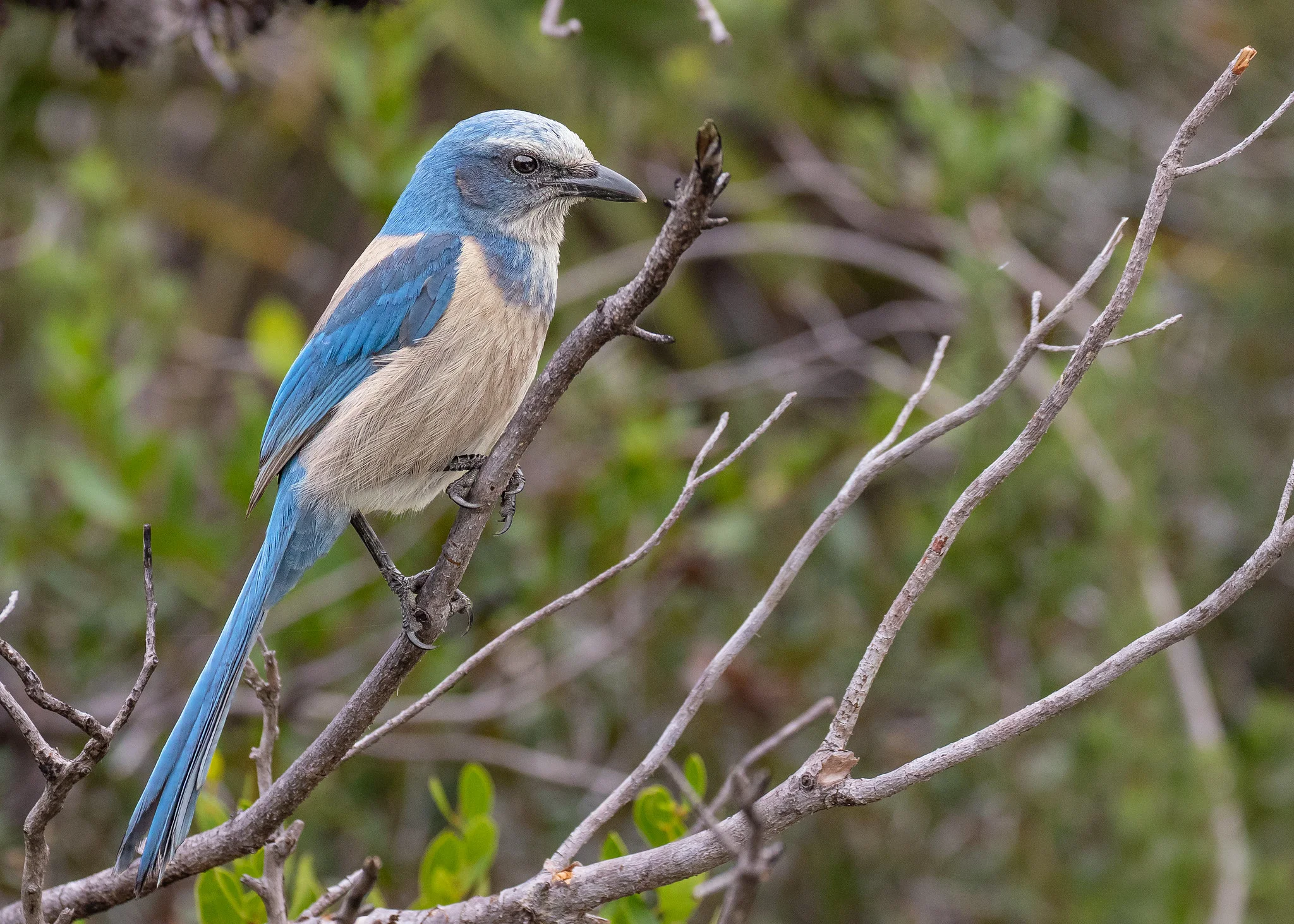As far as places within North America go, Florida is often regarded as one of the more exotic locations in the country. Therefore, it should come as no surprise that this state has birds that span all colors of the rainbow. This includes a wide array of blue bird species, and if you’re interested in learning about the types of blue birds in Florida, you’ve come to the right place!
Keep reading as I discuss 18 birds that are blue in Florida. By the conclusion of this article, you will be very familiar with the blue birds of Florida. Let’s get started!
Table of Contents
18 Blue Birds In Florida
Blue-winged Teal
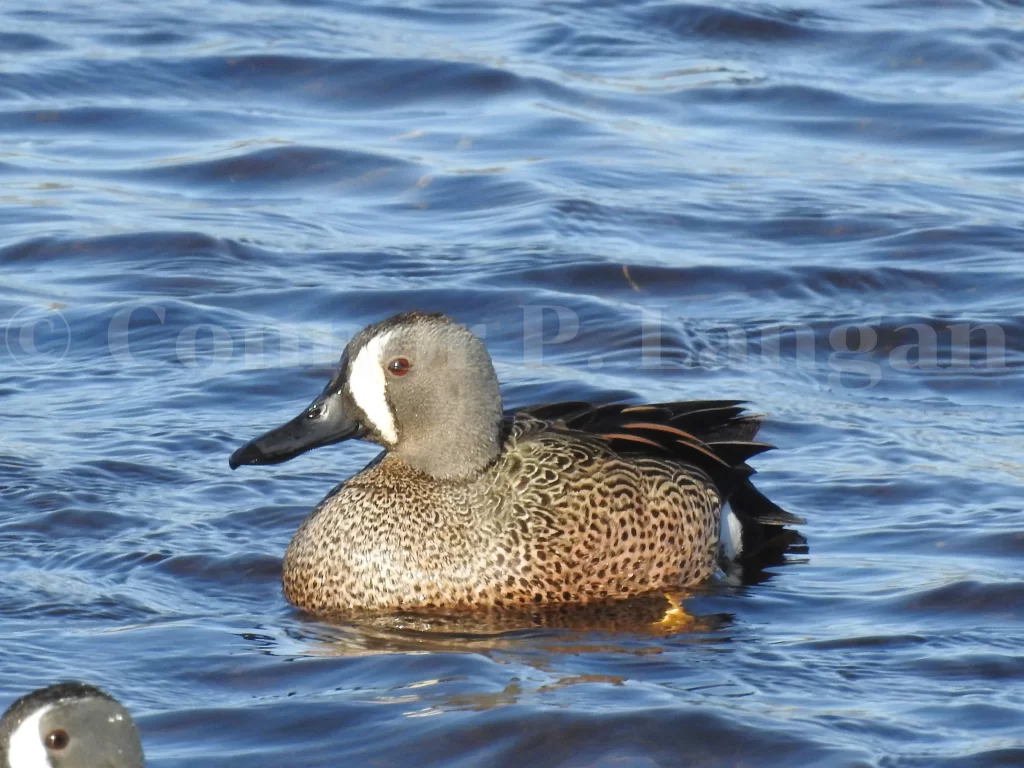
Blue-winged Teal are some of the most familiar waterfowl in Florida, with more than 185,000 eBird reports of this species. They are most common in the state from mid-October through March, but small numbers remain during summer.
Males are obvious blue colored birds in Florida thanks to their prominent blue heads. It may not appear that females have any blue coloration on their brown bodies, but a view of a flying female will quickly dispel those thoughts.
Yes, both female and male Blue-winged Teals have prominent blue wing patches that are visible in flight. These blue Florida birds thrive in the myriad freshwater wetland habitats of the Sunshine State. Anywhere from channelized creeks in urban areas to remote swamps may host these adaptable creatures.
Little Blue Heron
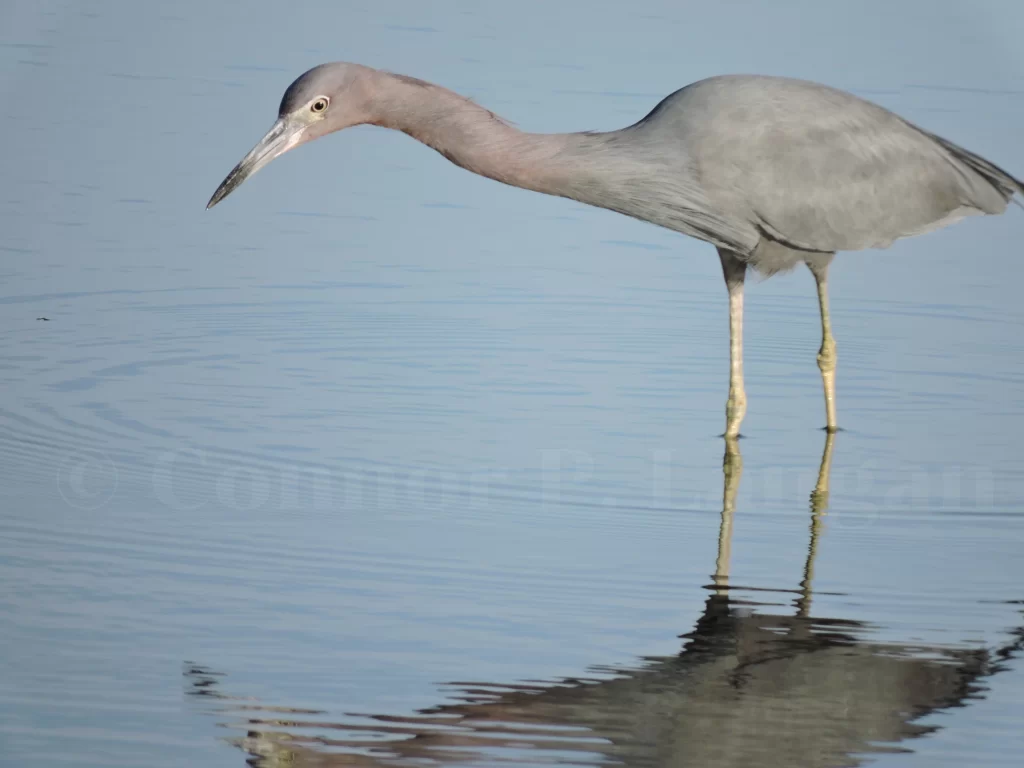
Florida is where herons reign supreme, with the Little Blue Heron being one of the most widely reported herons or egrets. Yes, there have been about 675,000 eBird reports of this species in Florida alone.
There’s no doubt that adults of this sexually monomorphic species are blue, as their entire bodies are a dark blue coloration. However, juvenile birds can be perplexing to birders, as their feathers are entirely white. However, note their bicolored bills.
Little Blue Herons are versatile, being found in just about any habitat with shallow water in which they can wade and hunt for prey. These blue birds in Florida may be found in freshwater habitats as well as saltwater lagoons.
Great Blue Heron
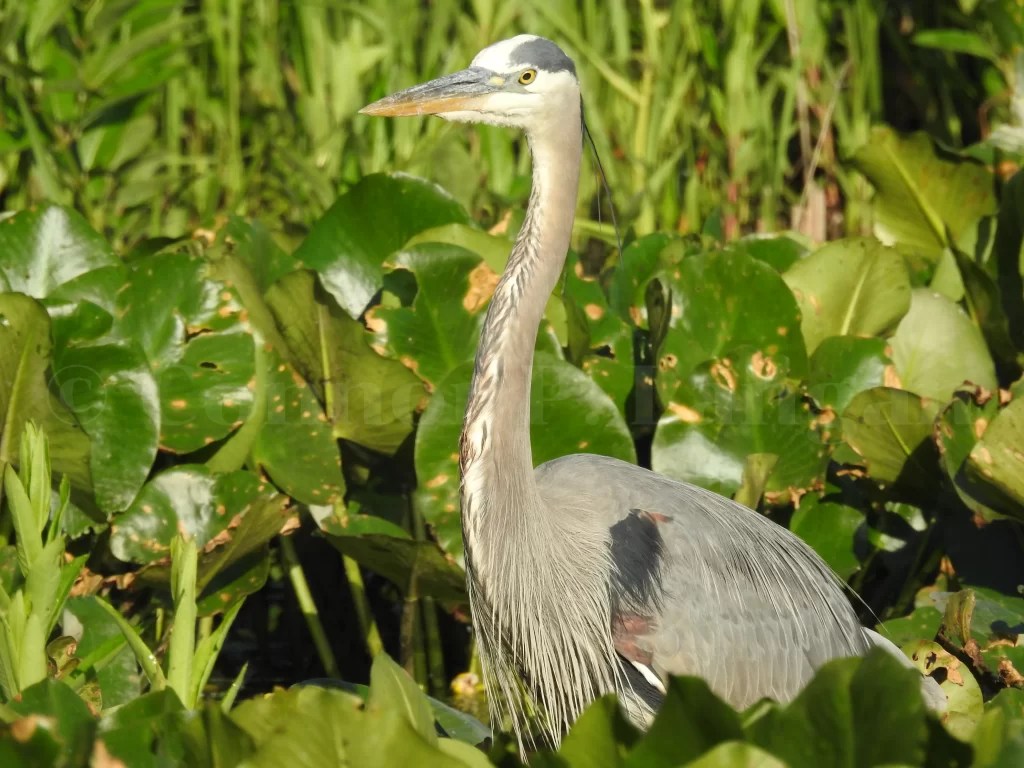
Not only are Great Blue Herons the most recognizable heron in Florida, but they’re the most well-known heron in North America. Anyone familiar with this large blue bird in Florida will know that it’s not truly blue. Rather, most adults have grayish bodies.
About 780,000 Great Blue Heron observations have been submitted in Florida. In addition to the standard gray-colored “blue form” subspecies, there is a “Great White” heron subspecies present in Southern Florida. These birds are entirely white and superficially resemble a Great Egret, though they’re much larger.
These blue birds of Florida thrive in slow-moving waterways. They may become habituated to humans in urban areas, emboldening them to approach people for food. Although it may be tempting to feed these Florida blue birds, it is best to avoid feeding them.
Belted Kingfisher
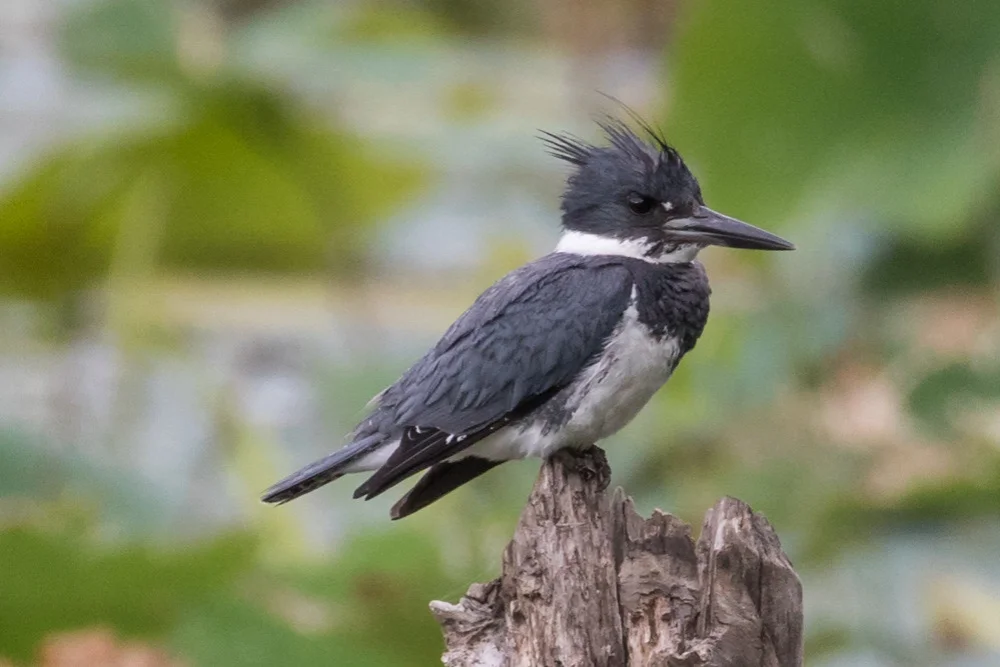
Belted Kingfishers can be found throughout Florida, though most of the 365,000 observations come from September through March. Nonetheless, these crested birds persist into the summer and breed in Florida.
Belted Kingfishers are worthy of inclusion among the blue birds in Florida, as both males and females
have blue backs and a blue streak across their chests. The massive, spear-like bills of these birds are fantastic for capturing fish.
These Florida blue birds can be surprisingly subtle despite their sizable frames. Indeed, Belted Kingfishers often remain still at a hidden perch before diving into the water to capture fish. They are happy to try their luck in freshwater and saltwater ecosystems.
Blue-crowned Parakeet
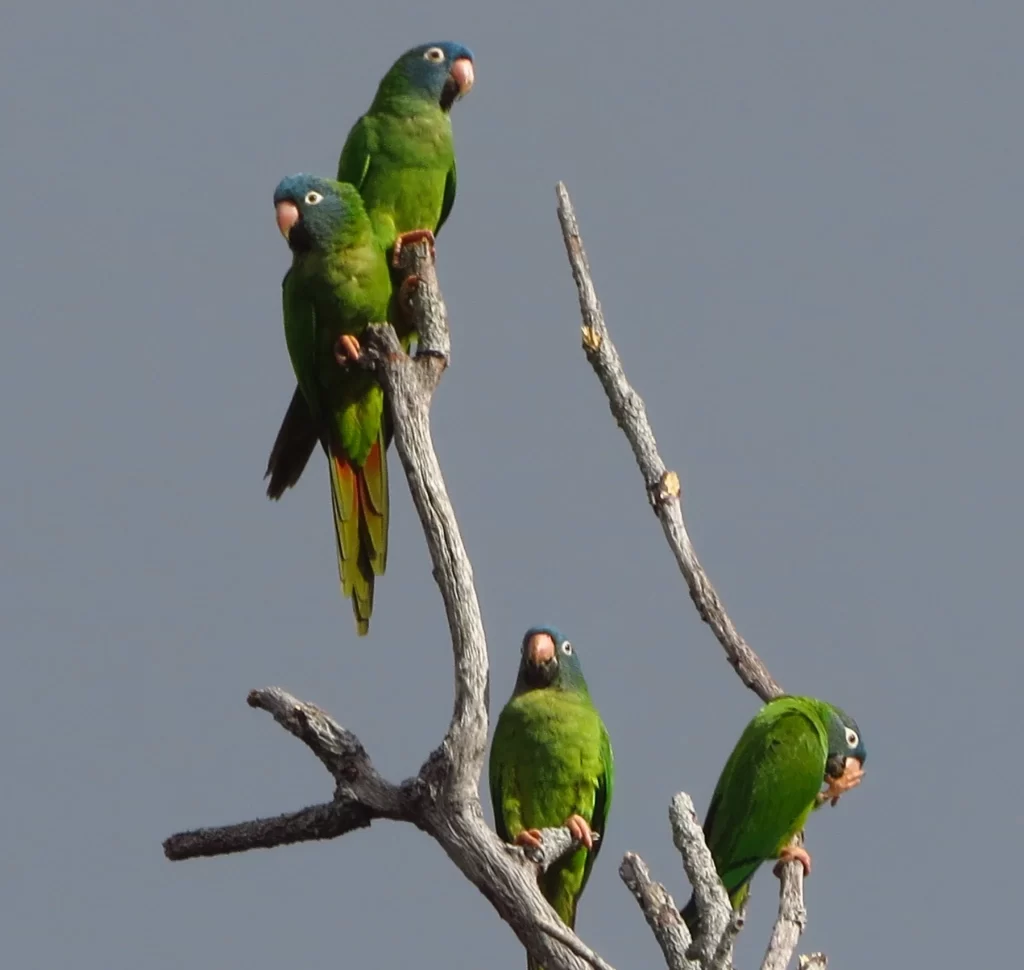
Blue-crowned Parakeets are not native to the state of Florida, being one of a dozen or so Florida parrots that have established feral populations in the state. Look for this blue bird in Florida around Miami, St. Petersburg, and Cocoa Beach.
Blue-crowned Parakeets are scarcely blue at all, being entirely green save for their blue faces. Nevertheless, their namesake has earned them a spot on this list of the blue birds in Florida.
These parakeets are very social. Indeed, finding a single Blue-crowned Parakeet is a rare occurrence, as they are far more likely to spend time in the company of other parakeets. This blue colored bird in Florida nests in cavities and may even feed on seeds from bird feeders.
Blue Jay
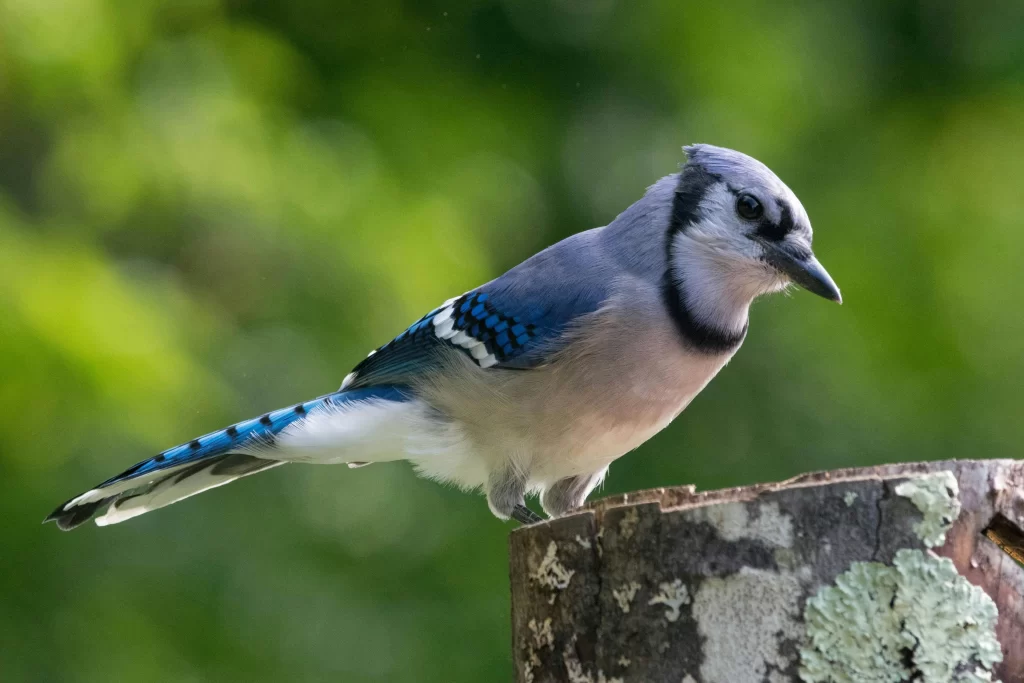
Blue Jays thrive in Florida, being distributed throughout the entirety of the state. Although they aren’t as abundant in southern Florida due to the absence of trees around the Everglades, there have still been 1 million eBird reports of this species.
This Florida blue bird is aptly named, with males and females both being a brilliant blue color. Although some regard Blue Jays as mean birds, it’s hard not to marvel at their beauty.
Blue Jays are prosperous in the millions of oak trees that can be found in Florida. They are highly adaptable, being one of the most successful birds in residential areas of the state. Those who have Blue Jays at their feeders will quickly witness the dominance that these birds display at food resources.
Florida Scrub-Jay
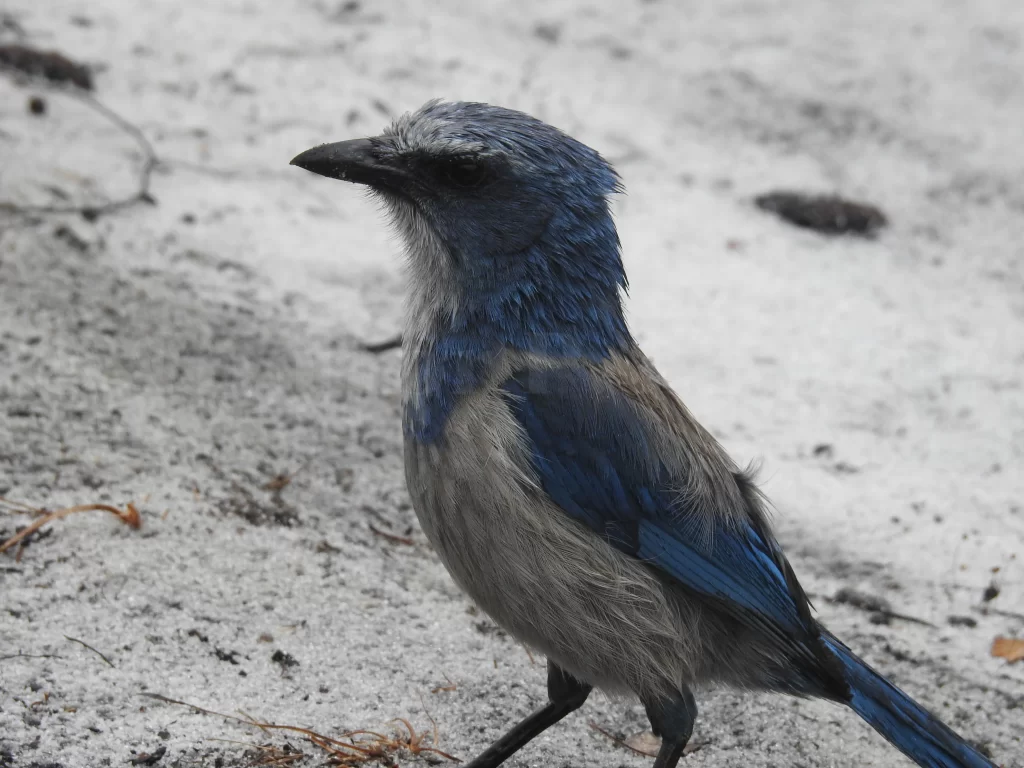
Florida Scrub-Jays are the most coveted bird in Florida, being the only endemic bird species within the Sunshine State. Yes, these incredible blue Florida birds are restricted to fragmented habitats throughout Central Florida. In total, there have been about 30,000 eBird observations of this uncommon jay.
Like other jays, Florida Scrub-Jays are sexually monomorphic. These curious creatures have blue heads, necks, wings, tails, and rumps. There are estimated to be around 10,000 Florida Scrub-Jays in existence, and evaluations by the International Union for the Conservation of Nature (IUCN) have concluded that this species warrants Vulnerable status.
Florida Scrub-Jays have very specific habitat requirements, being strictly found in oak scrub ecosystems. Here, these birds survive in family groups with young from previous years helping their parents raise new generations of Florida Scrub-Jays.
Tree Swallow
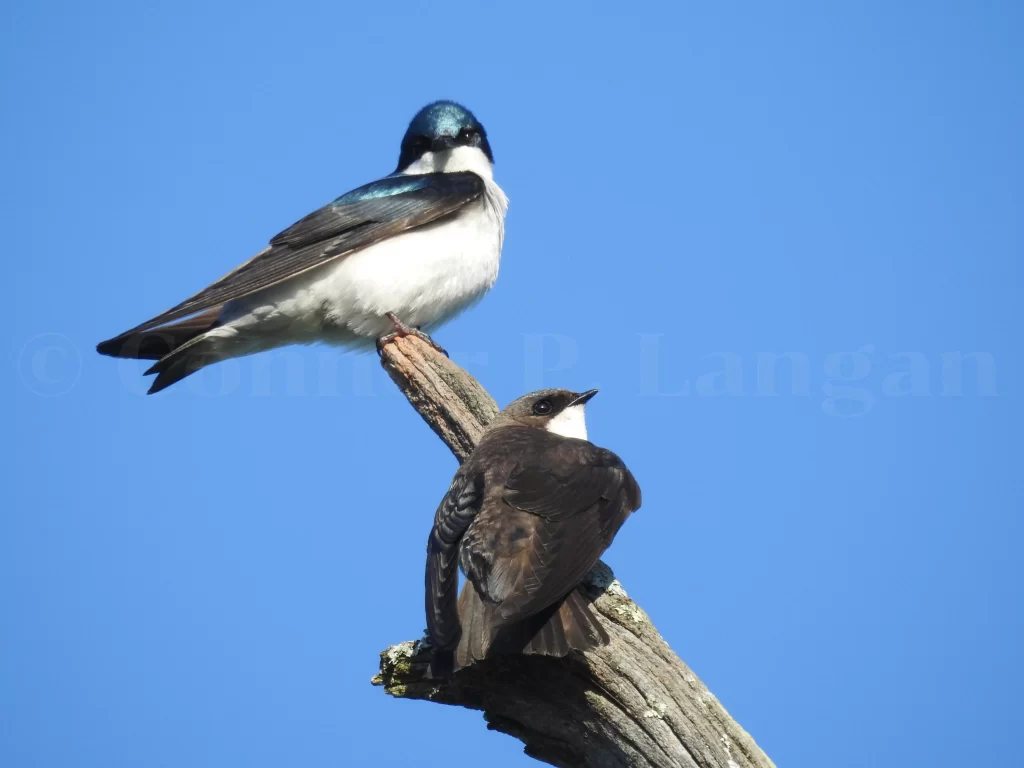
Tree Swallows are common winter residents in Florida, with numbers highest from December through mid-March. As the weather begins to warm, these blue birds of Florida begin to migrate north for the breeding season, with only a few summer records made annually.
Adults have stunning bluish backs that shimmer when illuminated. Like all swallows, these blue birds in Florida are aerial insectivores, meaning they will eat substantial amounts of insects.
Look for Tree Swallows as they fly above waterways, grasslands, or other habitats that support an abundance of insects. They will occasionally land and perch in trees or along power lines, but they are quite capable of flying for great lengths of time.
Barn Swallow
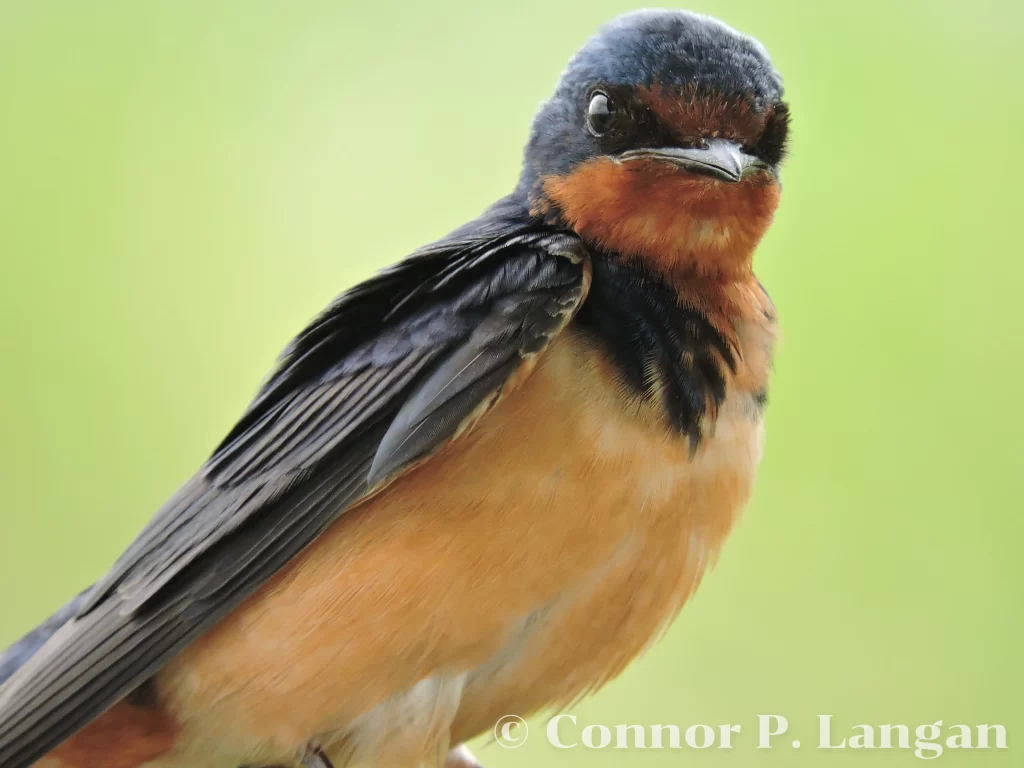
Although Barn Swallows are the most common swallows in many parts of North America, this is not the case in Florida. Indeed, these blue birds in Florida are common at the opposite time as Tree Swallows, being most numerous in summer and largely absent in winter.
The dark blue coloration on the backs of Barn Swallows pairs well with the orange undersides of these songbirds. Watching for their forked tails as they fly through the air can be an important identification feature.
The diets of Barn Swallows prompt them to forage in areas with high insect densities. Therefore, this blue bird regularly hunts over pastures and waterways. Barn Swallows regularly nest near humans, and many dislike the muddy nests built by these creatures.
Brown-headed Nuthatch
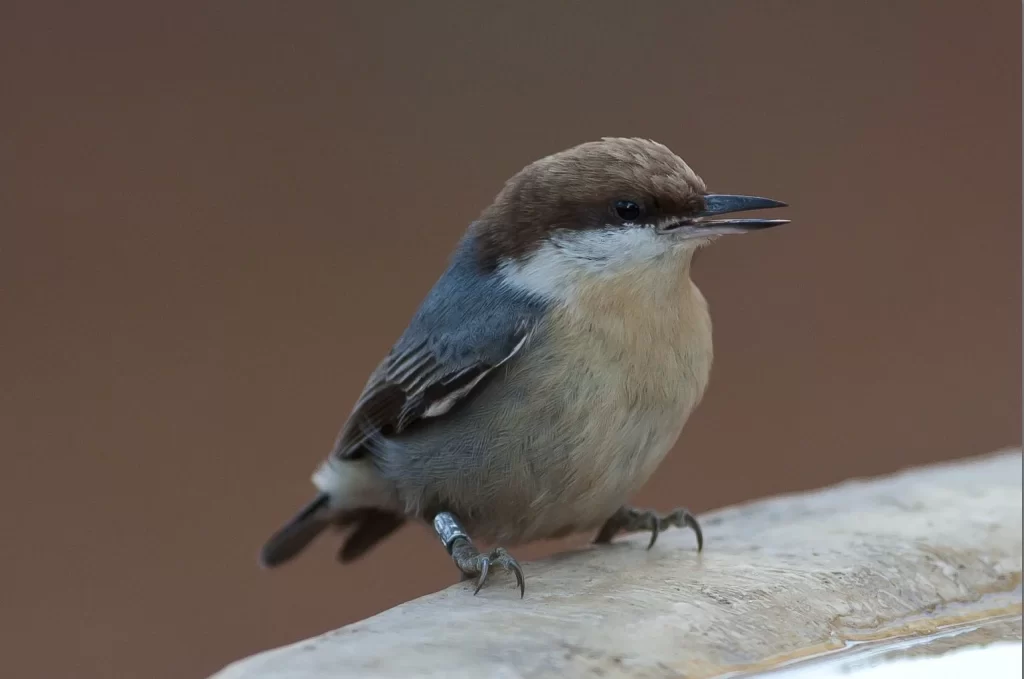
Brown-headed Nuthatches are a southeastern specialty, with 53,000 eBird observations coming from Florida. Although these Florida blue birds can be found in most of the state, they are absent from the vicinity of Miami, Fort Lauderdale, and St. Petersburg.
Aside from the hummingbirds in Florida, Brown-headed Nuthatches are some of the smallest birds in the Sunshine State. Their squeaky toy calls only add to their reputation of being petite birds.
Brown-headed Nuthatches are largely blue overall. Pine forests are the best places to search for this species. Here, they dangle from pine cones and live communally.
Blue-gray Gnatcatcher
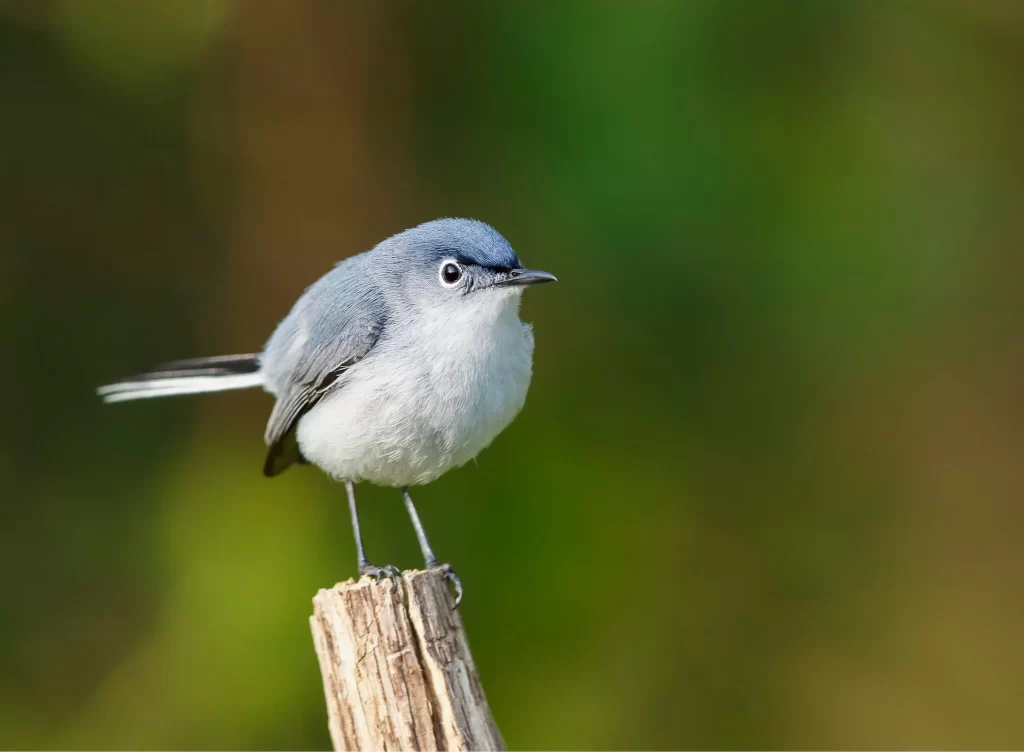
Blue-gray Gnatcatchers are tiny backyard small birds in Florida that are present throughout the state for the whole year. There have been 700,000 eBird records of this common songbird.
Blue-gray Gnatcatchers have long tails and bold white eyerings. They’re bluish gray overall, and this small blue bird in Florida makes a variety of wheezy calls as they actively forage for insects.
Any decently-sized wooded habitat can support this species. Notice that these Florida blue birds regularly flit their tails as they forage in trees or shrubs.
Eastern Bluebird
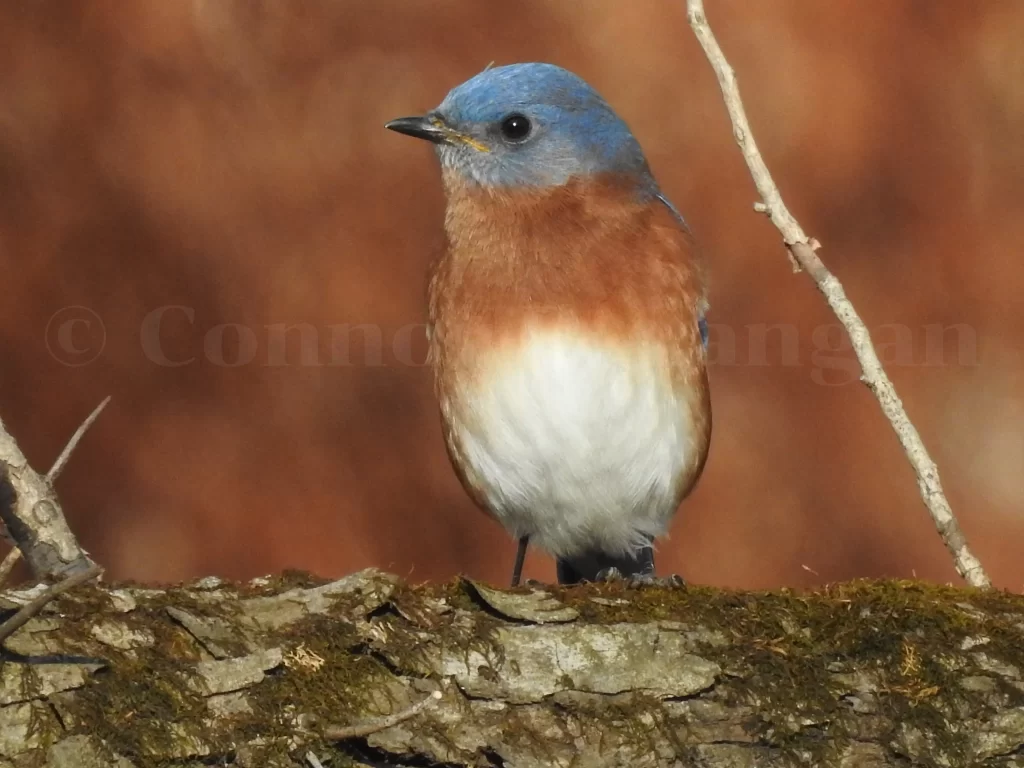
Eastern Bluebirds are beloved types of blue birds in Florida, being adored by backyard birders across the state. These charming songbirds have a wide distribution in Florida, though they are absent from the southeast corner of the state.
Male Eastern Bluebirds are far bluer than females, though both sexes possess substantial amounts of this color. Eastern Bluebirds are common at all times of year in Florida.
Look for these birds that are blue in Florida in open habitats where they seek a variety of insects. Of course, many people know that Eastern Bluebirds nest in birdhouses, so putting up one of these fixtures may attract a pair of these lovely birds.
Prothonotary Warbler
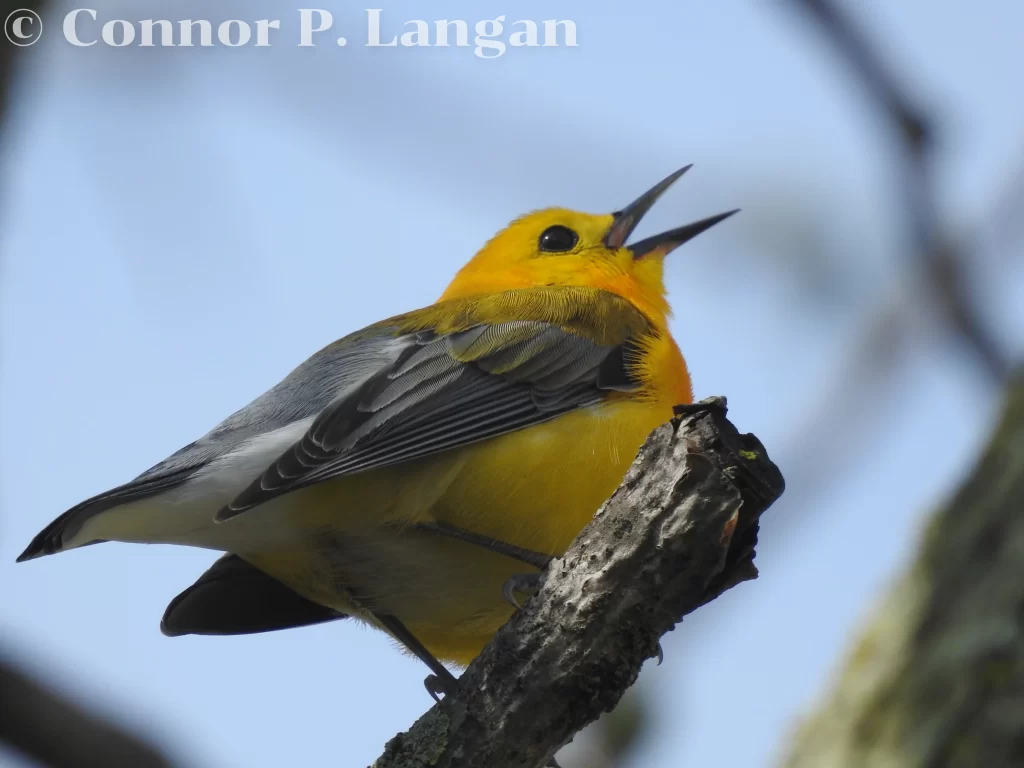
Prothonotary Warblers are in contention for the most dazzling blue bird in Florida on this list. They are not especially numerous in Florida, breeding in the Panhandle and other parts of northern Florida. They are unexpected blue birds in South Florida during summer, but reports occasionally are made here at this time.
The bright yellow heads, green backs, and blue wings and tails of Prothonotary Warblers make this species very memorable. Those who can navigate the swamps in which this species breeds will not regret an opportunity to lay eyes on this bird.
Prothonotary Warblers are notable for being warblers that nest in cavities, as no other Florida warbler showcases such behavior. Another interesting tidbit about these Florida blue birds is that they will feed on grape jelly left out for birds such as orioles.
Northern Parula
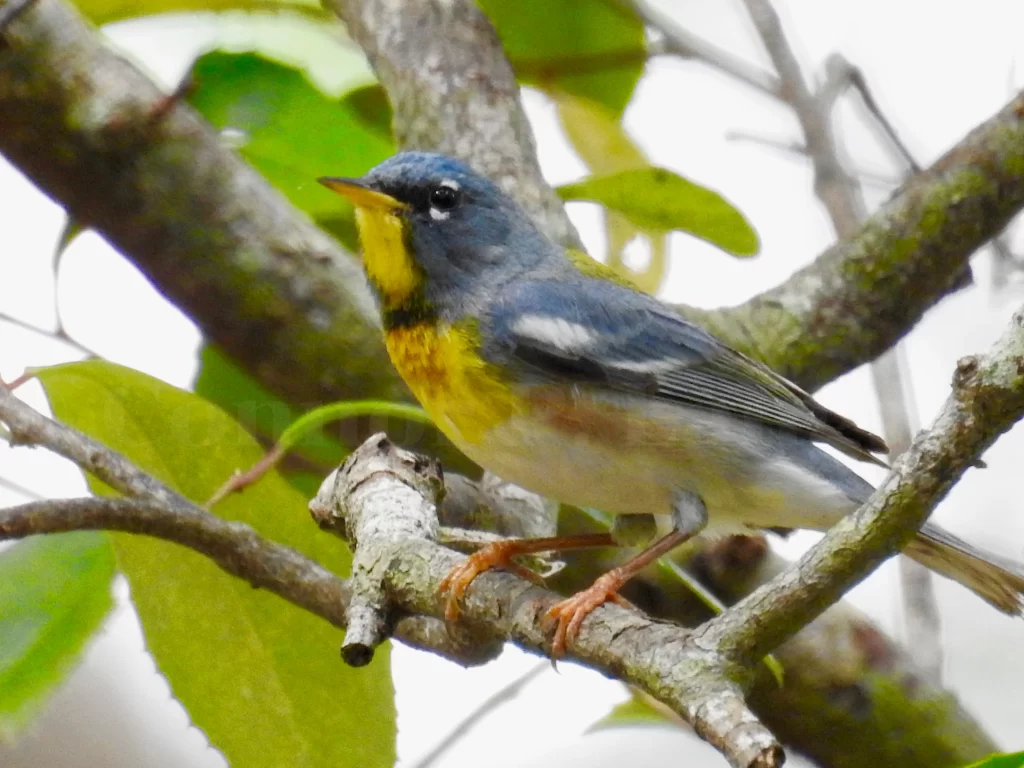
Northern Parulas are among the tiniest warblers in Florida. Still, they are quite common, with 382,000 eBird observations. They can be observed year-round, but they are most numerous from March through October.
The head and back of this species are largely blue, but they’ve also got a variety of other colors in their plumage such as green, yellow, and white. This small blue bird in Florida sings a buzzy song that gives away its presence.
Northern Parulas love the spanish moss-filled trees that can be found throughout Florida. Here, they construct nests and rear their young. Although they do not visit bird feeders, they may stop by a well-maintained bird bath.
Black-throated Blue Warbler
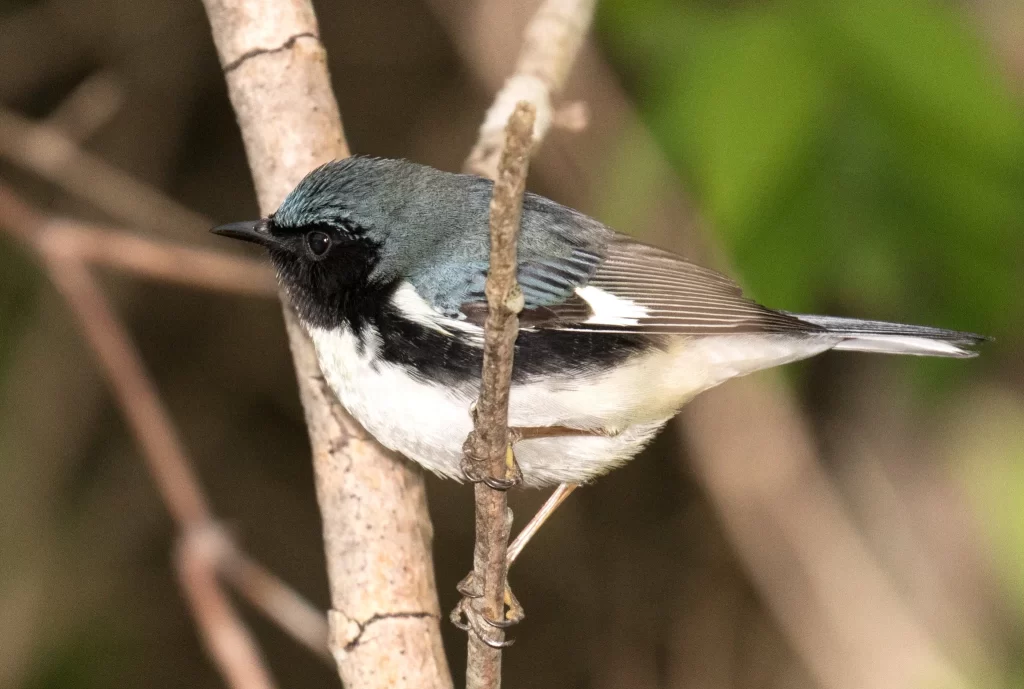
Black-throated Blue Warblers are captivating Florida songbirds. Although they do not breed in the state, there have still been 60,000 observations. The best times to observe this attractive blue bird in Florida would be mid-April to mid-May or mid-September through October.
Male and female Black-throated Blue Warblers look quite different from one another. Whereas males are blue and black birds in Florida, females are drab and brownish overall.
Black-throated Blue Warblers are largely absent from the Panhandle, so birders will be wise to look elsewhere for these blue Florida birds. Even small patches of trees may yield these songbirds, so be sure to not discount an area because it doesn’t have thousands of trees.
Blue Grosbeak
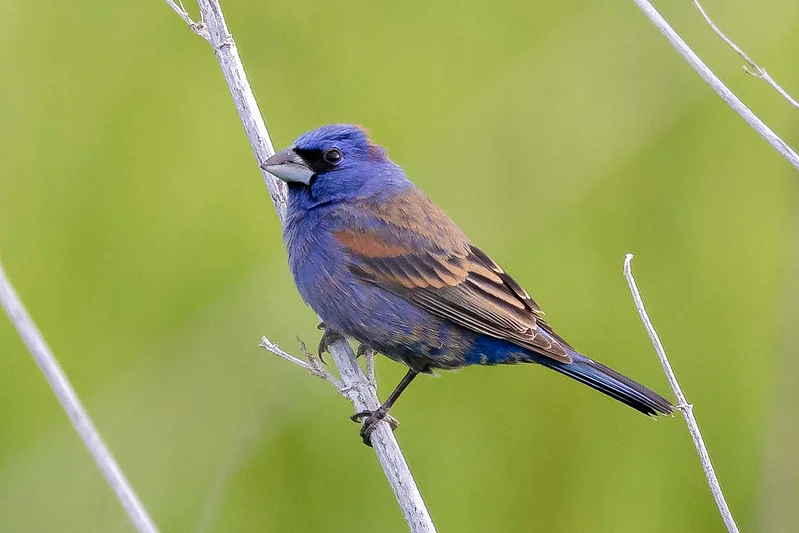
Blue Grosbeaks keep a fairly low profile despite the males being breathtaking blue birds in Florida. There have only been 32,000 eBird observations in the state, with Central and Northern Florida hosting breeding populations.
Males are entirely blue save for their rusty-colored wings. Meanwhile, females with their drab olive-colored plumage couldn’t be more different. Blue Grosbeaks are unlike many of their bunting relatives in that they do not tend to visit bird feeders.
Semi-open habitats bordered by trees are great places to look for this species. Don’t expect to find the cryptic females, but males can be discovered thanks to their bubbly song.
Indigo Bunting
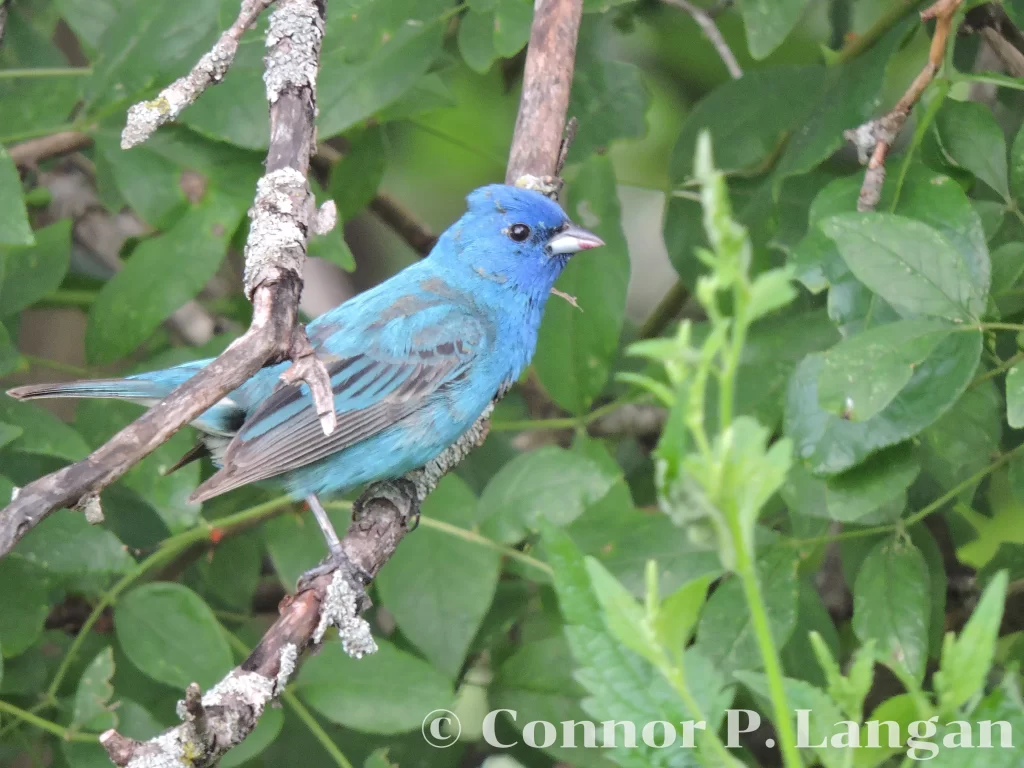
Much like their Blue Grosbeak relatives, Indigo Buntings only breed in Central and Northern Florida. Nevertheless, 74,000 eBird observations of these small blue birds have been submitted.
No bird is more deserving of a spot on a list of blue birds in Florida than a male Indigo Bunting. Indeed, these creatures are entirely blue – a stark contrast to the entirely brown females.
Indigo Buntings may visit bird feeders during migration. Although they are colorful like the finches in Florida, they are in the same family as cardinals. These blue birds of Florida thrive in semi-open habitats where males sing from prominent perches.
Painted Bunting
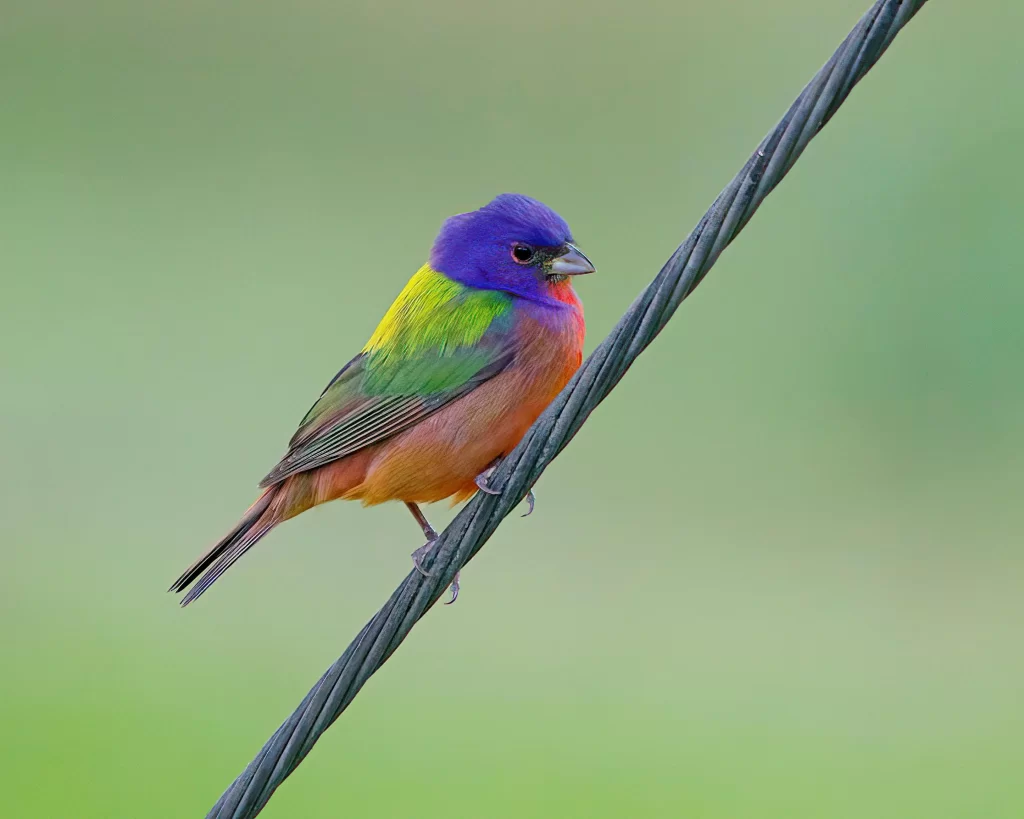
Viewing a male Painted Bunting will stop anyone in their tracks. Fortunately, these blue birds in Florida are rather common here, with 118,000 eBird records. Painted Buntings are found in Central and Southern Florida during winter. Come summer, they only breed in the northeastern corner of the state.
It’s hard to believe that a bird can be as colorful as a male Painted Bunting. Indeed, these stunning songbirds have blue heads, red undersides, and yellow and green backs. Meanwhile, females are subtle with their greenish brown colors.
In the winter, this blue bird in Florida lays low in weedy thickets. In summer, they breed in scrubby habitats with young trees adjacent to patches of open areas.

